PrintLab and Tinkercad at Southampton Township School
In today’s blog, we are joined by our pioneer Ron Nober to discuss a recent PrintLab project he delivered to his 5th Grade class. The aim of the project is to create a spinning top that will spin for as long as possible. Although a simple concept, you might be surprised at how much learning, failure, grit and iteration is involved - especially when you introduce a competitive aspect in the form of a class spin-off! Let’s dive into the interview…

29th August 2023 • Case Studies
Hi Ron! Great to have you back on the PrintLab blog. Can you begin by telling people a little about yourself, what you teach and where 3D printing fits into your role?
My Name is Ron Nober I am a technology/STEAM teacher in Southampton, New Jersey, USA and I teach grades 3-8. I work to introduce students to all different aspects of technology from audio/video editing, coding, 3D design and printing, engineering, and design thinking. I have been teaching technology and STEAM since 2016. My long term goal as a technology teacher is to allow students to see the intersection between technology and social good. I believe 3D printing is one of the most effective ways to do this and PrintLab offers many great ways to do this.
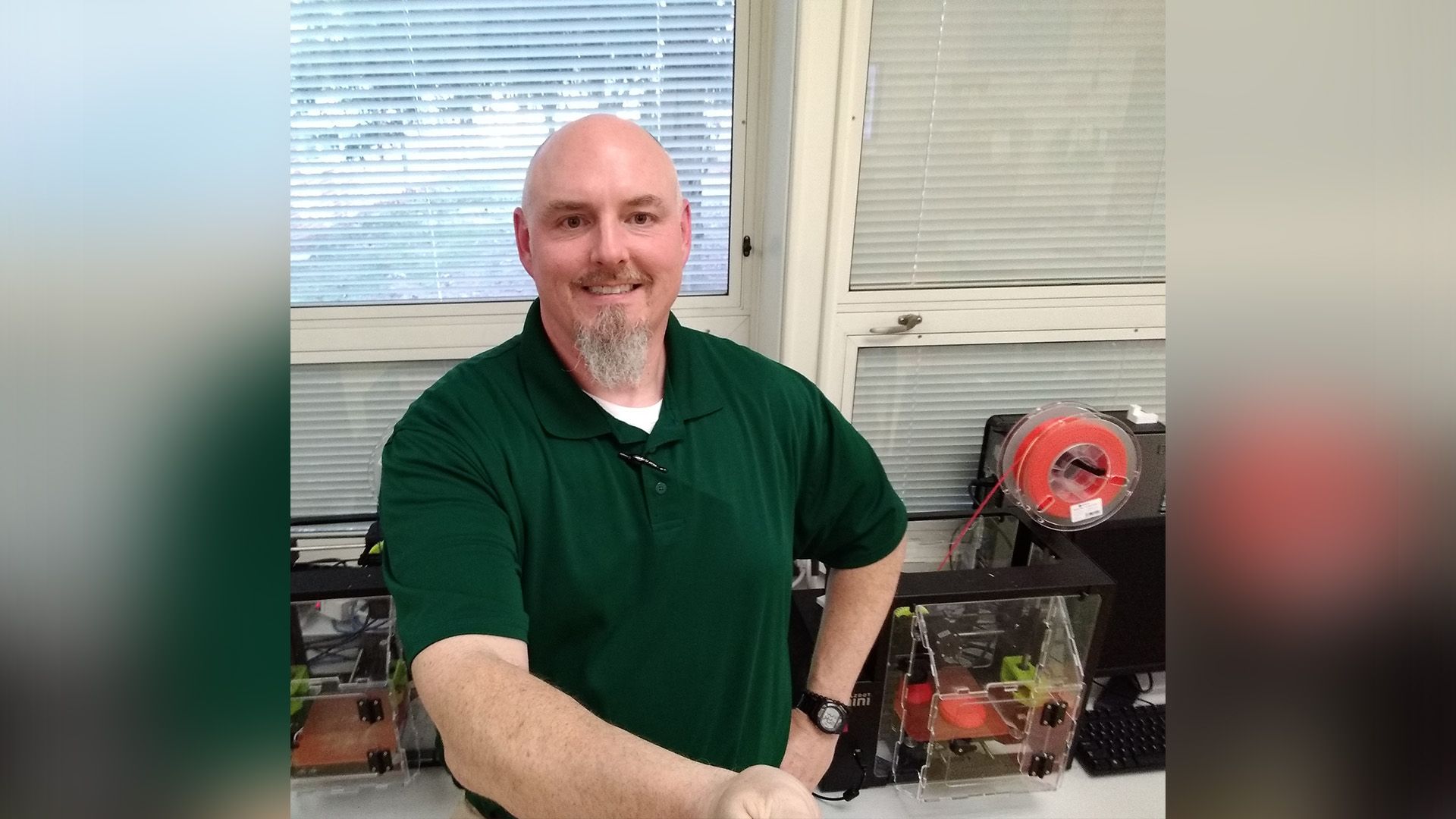
Which class participated in the spinning tops project and how did it fit in with your curriculum?
I used the spinning top project with my 5th grade class as their introduction to 3D design and printing. I chose this project because it was a fun and easy entry point for designing and especially iteration. Having to design, test, and redesign a top was fun for most students. They enjoyed trying new design ideas, working hard to improve the design in the tutorial, and creating the best longest spinning top.
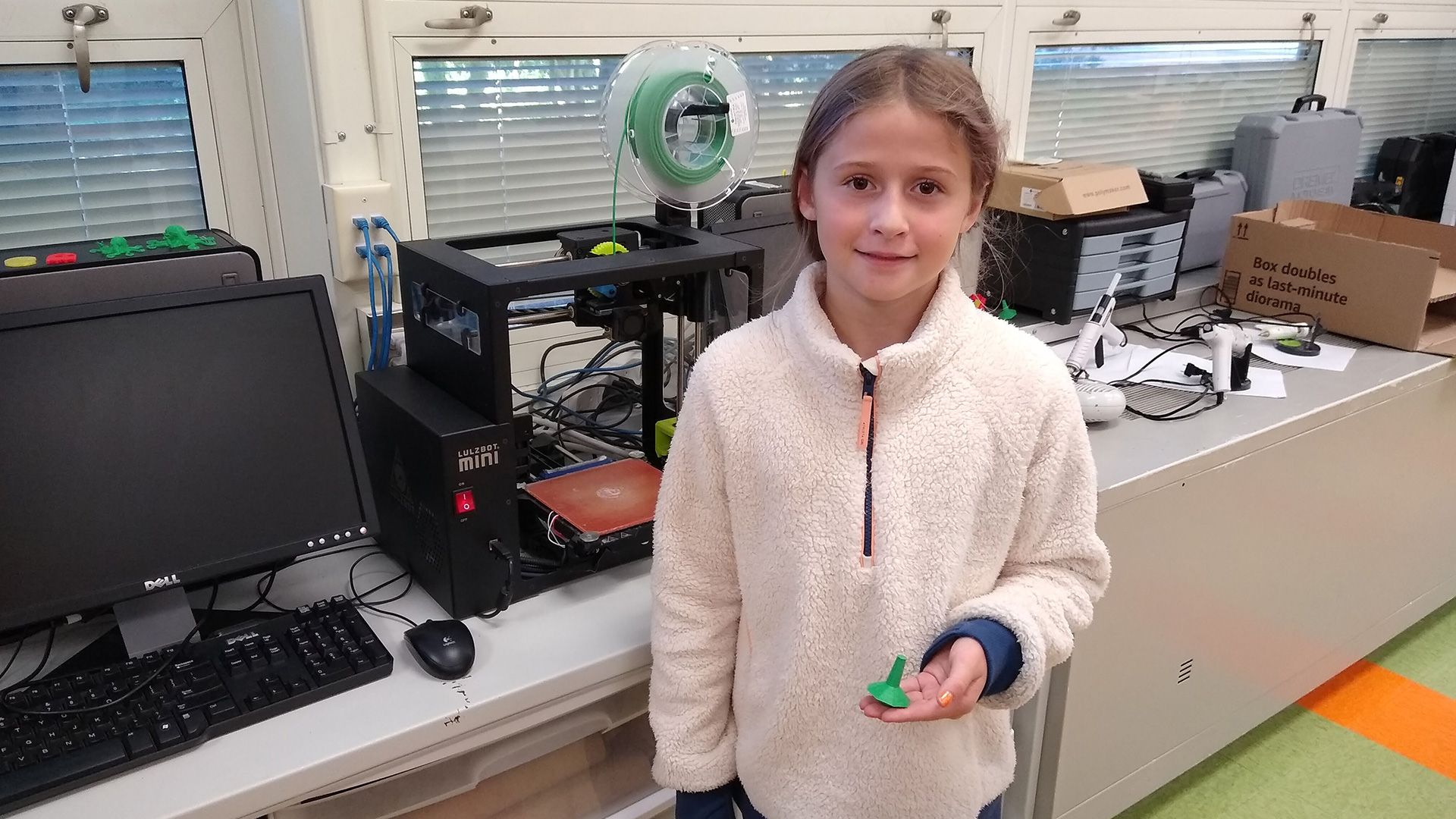
Can you explain the process students went through during the project?
To begin this project, I told students they were all now employees of Warrior Toys, our school mascot is the warrior. They were on the design team and tasked to create a better top than the tops we were currently selling (the PrintLab example tops). We shared about the history of tops and how they have been around for thousands of years. Students got to play with and test the example tops, discuss what they liked and didn’t like, and then we watched the PrintLab video discussing the physics behind tops. Students took notes on the video and shared how they would change the example tops. Students then were able to watch the Tinkercad top design tutorial and sketched their design for a new and improved top.
Once designs were done, they checked in with me, the head of innovation at Warrior Toys, and were then able to begin designing in Tinkercad. While students checked in with me, we discussed overhangs, print orientation, and bed adhesion. When students were ready to print, they let me know and since I had them sign in as a class in Tinkercad I could download and share to one of our class 3D printers. Sometimes prints were successful and sometimes they failed due to overhangs or bed adhesion. Students were always anxious to see whose prints worked and whose failed during the beginning of next day’s class and we celebrated both the successes and failures.
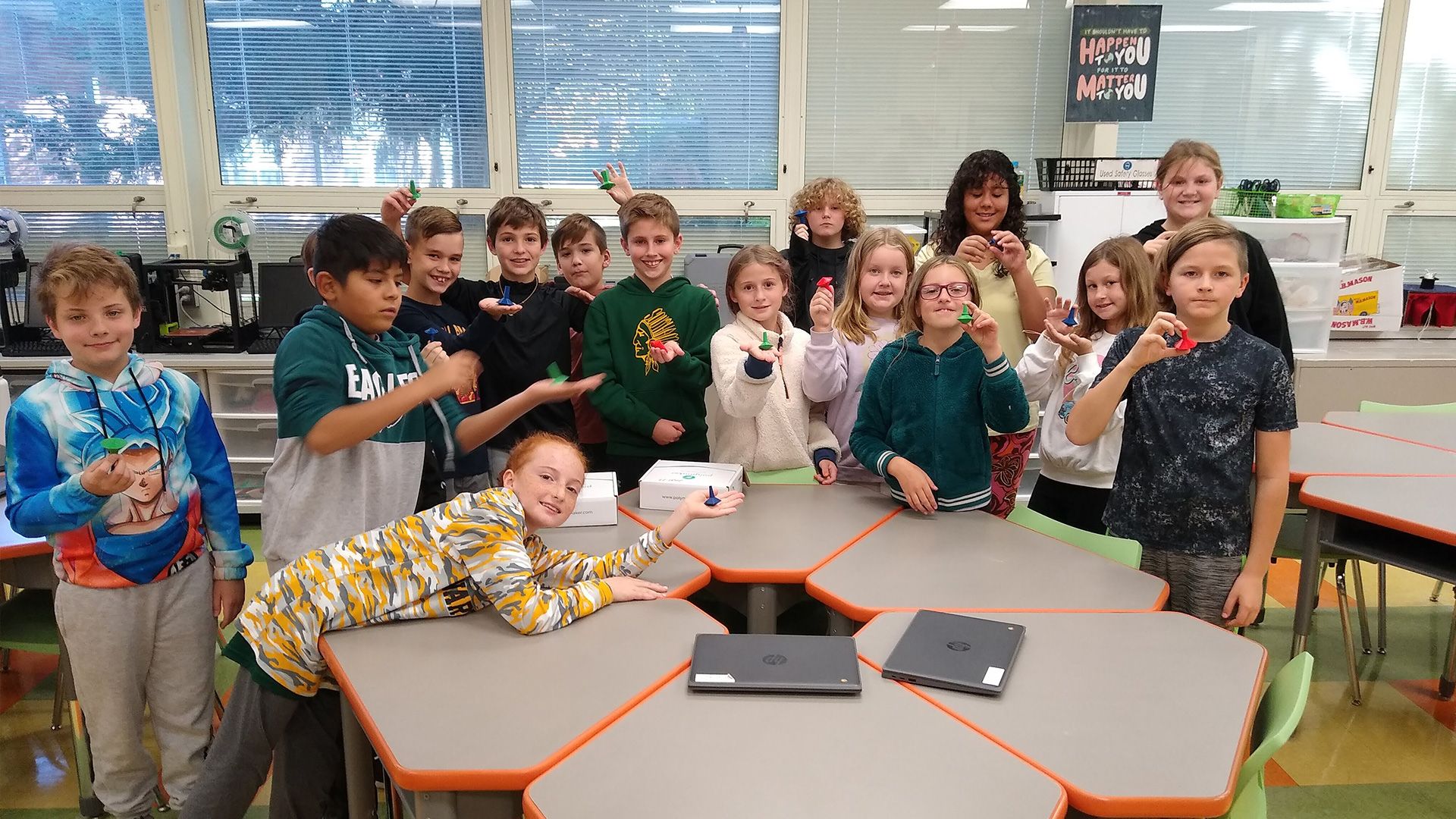
I limited students to 3 prints maximum, this made sure that students understood that a fail was okay but also let them know they needed to be aware of mistakes with design. As students iterated their designs, they would meet with me or they would meet with other students to discuss design iteration and get feedback.
Finally we had a class spin-off where students battled each other’s spinning tops head to head with the winner continuing on in the competition. This project celebrated and allowed for failures, celebrated successes, and showed students the iterative process in a fun and low stakes way before moving on to bigger projects.
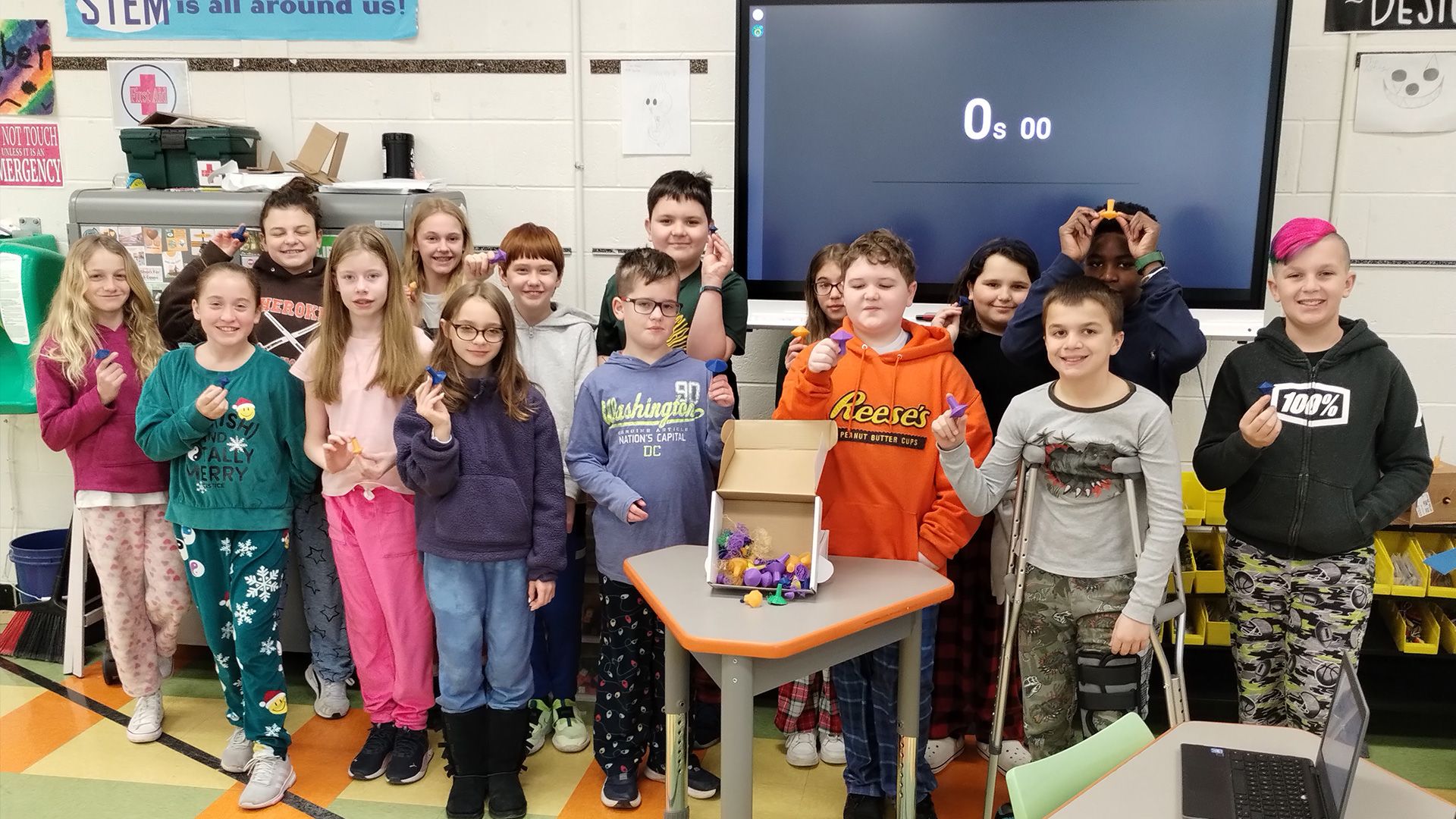
One thing we noticed in the images you shared is that there were some failed 3D prints. Can you expand on the importance of failure and iteration in the classroom?
There were MANY failed prints for a number of reasons – from large overhangs, bed adhesion, poor designs, and iterations of successful designs. I believe failure and iteration is important in my class and really any class because it teaches resilience and grit. Many students, especially in the school environment see failure as bad, like a bad grade, but failure is a part of learning. Think about riding a bike, playing a video game, or learning an instrument. In all of those examples we accept and expect failure and our students do as well.
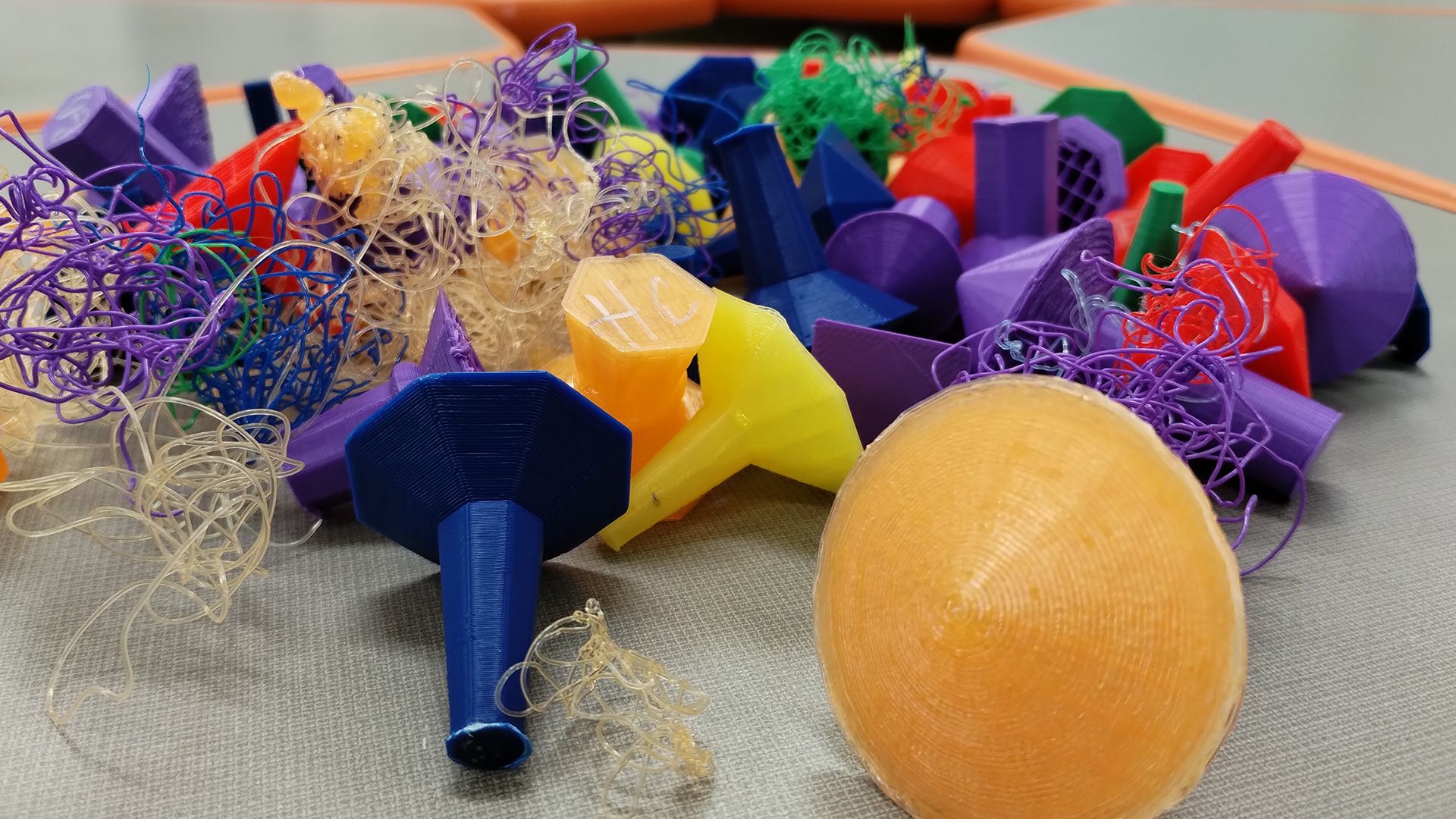
This is one of the reasons a student does not get discouraged and will continue to play a video game for hours on end. But, typically in school, specifically in testing, it is one chance pass or fail, no do overs. In general, school is not a place where failure is embraced and why many students see themselves as failures or stupid. However, with this project and many design style projects, failure and iteration is embraced and expected, making students see themselves as successful even in the face of failure. Allowing time for iteration is crucial specifically when it comes to a design style class like mine.
We know you are big fans of Tinkercad design software (as are we!). Why do you opt for Tinkercad over other options and what features make it your ‘go-to’ tool?
Why Tinkercad…BECAUSE IT IS AWESOME! Seriously, because it has great features for both students and teachers alike. It has an ease of use yet is a powerful tool. Students can come in and sit down and within one class be comfortable designing in Tinkercad. Another thing Tinkercad does well is they are ALWAYS iterating and improving its platform.
One example is the new “Cruising Tool,” users can easily place shapes using this new shape workplane helper. From the teacher’s side, the Tinkercad classroom feature is amazing. Being able to go in and download the STL file directly from Tinkercad saves an enormous amount of time and if there is anything teachers don’t ever have enough of it’s time.
Finally, how did the PrintLab platform help you as a teacher during the project?
How did PrintLab help? PrintLab provided the guidance and bones of the project. I added the “Toy Company” aspect to make it more real and project based for my students, but the idea, the videos, the worksheets were ALL PrintLab. I really love the videos, they are short and full of information. The length of the videos is so important, because many videos are too long and students get frustrated, but all the PrintLab videos are the perfect length.
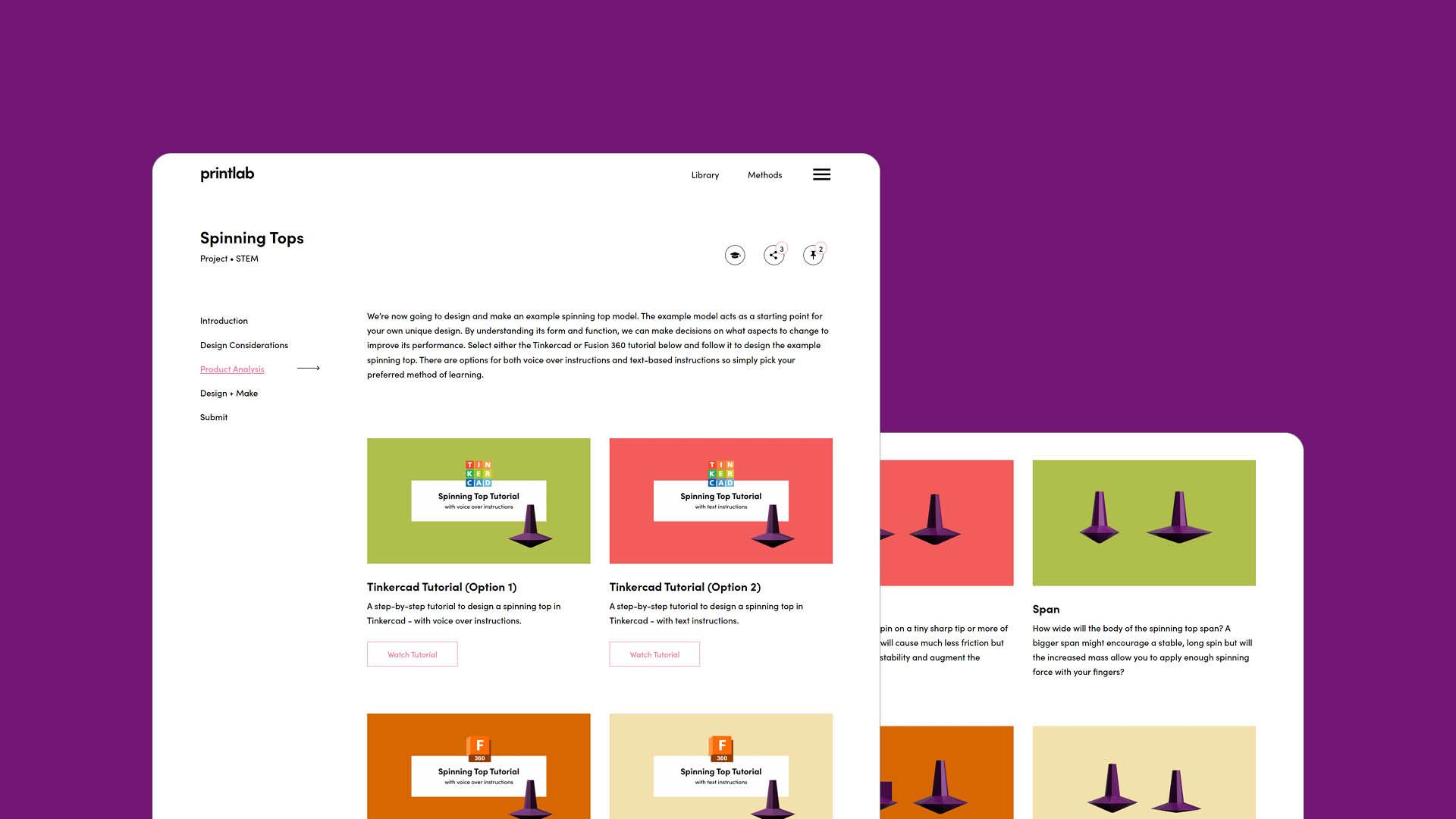
Students were able to easily follow the video tutorials allowing them to be successful. The platform also allows for someone like me, who is comfortable with 3D design and printing, to create phenomenal projects, but more importantly it allows for someone with little to no experience in 3D design and printing to bring it into their classroom too. What I also like and what many may not realize is that you can also do many of the PrintLab lessons even if you don’t have a 3D printer!
—
A big thank you to Ron and his students for sharing their experience with us. It’s fantastic to see how the students at Southampton Township School embrace failure and we look forward to sharing more content from them in the near future. Finally, if you’re interested in checking out the spinning top project for yourself, get started with a free PrintLab trial here!